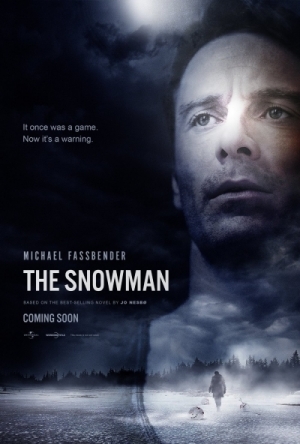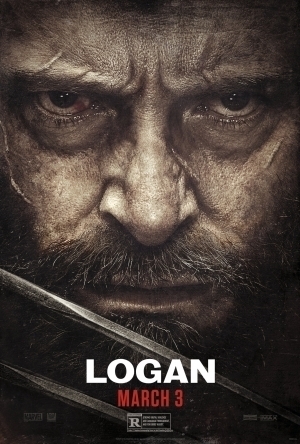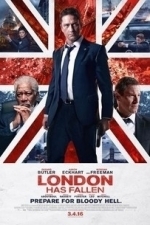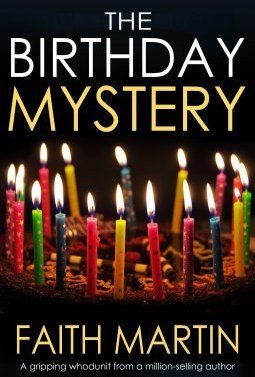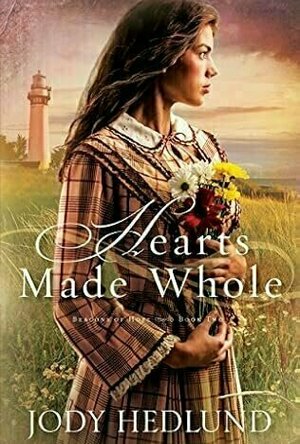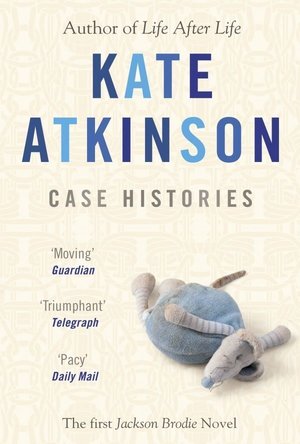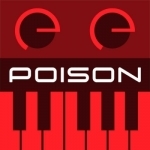
Poison-202 Vintage Synthesizer
Music
App
What reviewers and users say: "This is a very solid virtual synth that, sonically, punches well...
Bob Mann (459 KP) rated The Snowman (2017) in Movies
Sep 29, 2021
A story by bestselling Nordic writer Jo Nesbø;
Gorgeously photogenic snowy scenes of Oslo and Bergen;
A stellar cast (Michael Fassbender (“Alien: Covenant“); Rebecca Ferguson (“Mission Impossible: Rogue Nation“); J.K. Simmons (“Whiplash“); Toby Jones (“Dad’s Army“); Chloe Sevigny (“Love and Friendship“); Charlotte Gainsbourg (“Independence Day: Resurgence“, very sexy as Fassbender’s ex-squeeze) and even Val Kilmer (“Top Gun”, whose mother – interesting fact – is actually Swedish).
snowman2
That sinking feeling when you realise you’ve been drinking all night and its too late for bed before work.
And while these elements congeal in the snow together quite well as vignettes, the whole film jerks from vignette to vignette in a most unsatisfactory way. I haven’t read the book (which might be much better) but the inclusion in the (terrible!) trailers of key scenes that never made the final cut (where was the fire for example?, the fish? the man trap?) implied to me that the director (Tomas Alfredson, “Tinker, Tailor, Soldier, Spy”) and screenwriting team – Peter Straughan (also “Tinker, Tailor”), Hossein Amini (“The Two Faces of January“) and Søren Sveistrup (TV’s “The Killing”) – either didn’t have (or didn’t agree on) the direction they wanted the film to go in.
Film Title: The Snowman
Arve Stop (J.K. Simmons) and Katrine (Rebecca Ferguson) having a “Weinstein moment” at the hotel.
Nesbø (and indeed most crime writers these days) litter their work with damaged cops…. you have to question whether the detective application form has a mandatory check-box with “alcoholic and borderline psycho” on it!. This film is no exception. Fassbender plays Nesbø’s master sleuth Harry Hole: an alcoholic insomniac well off the rails between homicide cases. “If only Oslo had a higher murder rate” bemoans his boss (Ronan Vibert). He joins forces with newby officer Katrine Bratt (Rebecca Ferguson), who has her fair share of mental demons to fight, in investigating a series of missing person/murder cases. The duo unearth a link between the cases – all happen when the snow starts to fall and to particular types of women, with the protagonist leaving a snowman at the scene.
snowman5
One of the cuter snowmen… they get worse… much worse.
The plot is highly formulaic – I guessed who the killer was within about 20 minutes. But what makes this movie stand out, for all the wrong reasons, is that it has one of the most stupid, vacuous, flaccid, inane, ridiculous … (add 50 other thesaurus entries)… endings imaginable. My mouth actually gaped in astonishment!
There are also a surprisingly large number of loose ends you ponder after the film ends: why the “Snowman”‘s fixation with Harry?; what was with the “Vetlesen cleaner” subplot? How is Star Trek transportation possible in Norway? (But wait… “Telemark”… “Teleport”…. coincidence????? 🙂
On the plus side, there is some lovely Norwegian drone cinematography – (by Australian Dion Beebe (“Edge of Tomorrow“) – that immediately made me put “travel by winter train from Oslo to Bergen” on my life-map. The music by Marco Beltrami (“Logan“) is also effective and suitably Hitchcockian.
If you like your films gory, this one is definitely for you, with some pretty graphic content that (for those who like to cover their eyes) is cut to so quickly by editors Thelma Schoonmaker (“The Wolf of Wall Street“) and Claire Simpson (“Far From The Madding Crowd“) that your hands won’t have time to leave your lap! I remember this being a feature of a previous Nesbø adaptation (the much better “Headhunters” from 2011) but here it goes into overdrive.
snowman1
One of my favourite actresses – Rebecca Ferguson, curiously playing much “younger” in this film than she appears in her previous hits.
Overall this was a rather disappointing effort that was heading for a FFf rating. But just because of that ending I’m knocking a whole extra Fad off!
Movie Metropolis (309 KP) rated Logan (2017) in Movies
Jun 10, 2019 (Updated Jun 10, 2019)
To this end, Hugh Jackman has finally decided to hang up his Adamantium claws after Logan, his ninth and apparently final outing as the grizzly hero. Are we third time lucky for his solo films?
James Mangold, director of The Wolverine, returns to the director’s chair and helms an at times brutal and uncompromising film speckled with the sort of emotional heft you’d find in the saddest rom-com’s.
In the near future, a weary Logan (Hugh Jackman) cares for an ailing Professor Charles Xavier (Patrick Stewart) in a hide out on the Mexican border accompanied by long-time acquaintance Caliban (Stephen Merchant). But Logan’s attempts to hide from the world and his legacy are upended when a young mutant, Laura, (Dafne Keen) arrives, being pursued by unspeakable dark forces.
In parts, Logan feels very much like a Western. The bleak, unforgiving Mexican landscape is a beautiful change from the dreary concrete jungles that blight the majority of superhero films these days and this is where Logan will either succeed or fail. It doesn’t feel like a superhero film, despite its faithfulness to the Old Man Logan comics.
Much like a metaphor for the genre itself, Logan has grown weary of the world and it is a testament to Hugh Jackman’s acting capabilities that he is able to add yet another dimension to a character that has been a cinema staple since the Millennium. Patrick Stewart is also on top form showing a vulnerable side to the world’s smartest mutant. Newcomer, Dafne Keen is also exceptional despite her limited dialogue.
Heartfelt scenes in which the oddball family share dinner with kind strangers are strikingly juxtaposed with sequences of sheer brutality. If you thought Deadpool was bloody, you haven’t seen anything yet. And for all the violence, Logan is the most poignant film in the entire X-Men canon, wearing its 15 certification proudly when it needs to, but not shying away from sections of quiet contemplation.
Negatives? Well, in spite of its gargantuan length, the ending feels a little tacked on and rushed – something a lot of modern blockbusters seem to feel is necessary at the moment and the final 30 minutes are a slight anti-climax in comparison to what preceded it, but on the whole, this final outing for Hugh Jackman proves a fitting one. Third time’s a charm!
https://moviemetropolis.net/2017/03/03/third-time-lucky-logan-review/
Gareth von Kallenbach (980 KP) rated London Has Fallen (2016) in Movies
Jun 19, 2019
Banning decides to shake things up a bit and deviate from their posted itinerary which keeps their exact travel schedule known only to himself and a couple others. Things seem to be going as planned when a series of devastating attacks erupt all over London. Not knowing who can be trusted and where the enemy will strike next, Banning and the President are forced to battle an enemy that seems to be everywhere and always anticipating their plans as they attempt to reach safety.
from an action film. There are plenty of solid car chases, firefights, explosions, intrigue, and of course an abundance of bad guys for the hero to dispatch. The film works well as Banning is not afraid to let his emotions show but is also steadfast in his duty to protect the President no matter the cost. Banning is not an unstoppable killing machine or the one man army that is so common amongst action films as he is a dangerous and skilled person who is still able to admit he cannot do this alone and seeks help when it is needed.
Eckhart is given more to do this time out than simply play hostage and it is great to see him getting down and dirty at times when the action heats up. The film does take some moments to indulge in what many might call flag-waving jingoism with its over-the-top patriotic message which considering Butler’s Scottish heritage does seem a bit out of place at times. That being said, “London Has Fallen”, is a rare sequel that is as good if not better than the original and Director Babak Najafi keeps the film moving at a breakneck pace yet keeps the film a character driven story that never lets up once the action revs up.
Here is hoping that Banner and Asher have another outing in the near future as “London Has Fallen” is a real surprise and a great thrill ride from start to finish.
http://sknr.net/2016/03/04/london-has-fallen/
Midge (525 KP) rated The Birthday Mystery in Books
Dec 29, 2018
First, we are introduced to Jenny who is catering for the twenty-first birthday party of upper-class twins, Alicia and Justin. In her late twenties, Jenny is an impressive woman. Curvaceous and sexy, she’s a modern single woman, living the lifestyle that suits her – that of a travelling cook. Her famous father is a ‘celebrity’ cook, divorced from Jenny’s mother. Jenny is happy travelling the country catering for events and cooking great food. She is on a mission to bring back traditional home cooked food and to offer new and exciting recipes made with fresh ingredients. She arrives at the twins family country house located in a picturesque and charming village and is immediately met by the police. A young man has drowned in the pond. Was it an accident or murder?
The birthday party goes ahead and then, just after midnight, everyone gathers for a champagne toast . . . and one of the guests falls down dead. The police are baffled and there is a whole party full of suspects.
Jenny finds crime very distracting, especially when there is chocolate to temper or pike to poach. She is very observant, with an agile mind and an amazing ability to interpret clues and hidden meanings. Her wit and sense of humour help her sanity when all around her, people are dropping like flies. When it comes to someone possibly adding the extra ingredient of poison to her own precious recipes, Jenny isn't going to take it lying down. She has a reputation to protect.
Jenny Starling won't stop until the murderer is found.
There are many suspects in this mystery, clues a-plenty and red herrings all the way through this book. It was a thoroughly satisfying read and I often found myself asking the same questions as Jenny and I was kept in suspense to the end. The pacing in "The Birthday Mystery" was very good and I never lost interest, as it wasn't long before something intriguing would happen. Things came together for a great finish and wrapped everything up very neatly.
I'm definitely looking forward to reading the next novel featuring Jenny Starling very soon and other books by the author, Faith Martin. "The Birthday Mystery" whets your appetite for more to come.
My thanks to NetGalley, Joffe Books and the author for providing me with an advanced copy of this novel.
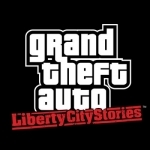
Grand Theft Auto: Liberty City Stories
Games
App
*** PLEASE NOTE: This game is officially supported on the following devices: iPhone 5 & 6 Series,...
BookwormMama14 (18 KP) rated Hearts Made Whole (Beacons of Hope, #2) in Books
Jan 2, 2019
Caroline Taylor's family has had their fair share of suffering. With their father having recently passed, their beloved home is now being threatened. But in 1865, because Caroline is a woman, the inspector sees fit to replace her with a man, Civil War veteran Ryan Chambers. Ryan is haunted by the pain of the past. All he wants to do is drown his sorrows any way that he can. Will they try to find their own solutions to their problems? Or will they turn to the only One who can heal their hearts and make them whole again?
"God is good all the time, no matter what bad things come into their lives." - Hearts Made Whole
There is something about Jody Hedlund's books that grip my heart. My laundry has sat forsaken the last few days and I have burned the midnight oil finishing Hearts Made Whole. Every emotion feels so real, the anger, love, fear, and hope. The exact circumstances portrayed in the book might never become a reality for me, but the emotions are very real. It was almost challenging to see the internal struggles that I deal with on a daily basis, brought to life before my very eyes. The distressing scenes only caused me to read faster and longer, wanting to know what would happen next. The hope that is instilled into the characters was contagious. The romance is passionate but clean and honorable. In all honesty, we need more authors like Jody Hedlund! Add Hearts Made Whole to your reading list today! This book can stand alone, but you really don't want to miss out on the first book in the series: Love Unexpected.
I received a free digital copy of Hearts Made Whole from Bethany House Publishers through
NetGalley in exchange for my honest review.
The Pearl Sister
Book
CeCe D'Apliese has never felt she fitted in anywhere. Following the death of her father, the elusive...
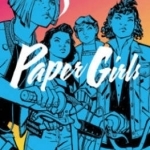
Paper Girls: Volume 1
Cliff Chiang, Brian K. Vaughan, Matthew Wilson and Jared K. Fletcher
Book
From Brian K. Vaughan, #1 New York Times bestselling writer of SAGA, and Cliff Chiang, legendary...
ClareR (6037 KP) rated Case Histories (Jackson Brodie, #1) in Books
Jul 21, 2021
Case two is about the death of a young woman at her fathers solicitors offices. After many years, the man who murdered her in broad daylight in the busy office, has still never been found.
The third case is a famous one. Tanya, a nurse, had been given the task of bringing up her niece after her sister murders her husband with an axe. However, Tanya has lost contact with the child (now a woman), and wants to find her again.
The fourth case is that of Jacksons own sister. After their mothers death, Jacksons sister is murdered on her way home from work. The murderer is never found.
It was really interesting to see how the cases wove together as the story went on, but what I really found interesting were the flashbacks to around the times of the murders.
Many of the characters are pretty unpleasant - except for the very moral Jackson Brodie - and I found that an interesting contrast.
I think that this is a series that I’m going to have to read more of. I like the Brodie character, and I’m intrigued to see if the next book is set up in a similar way.
